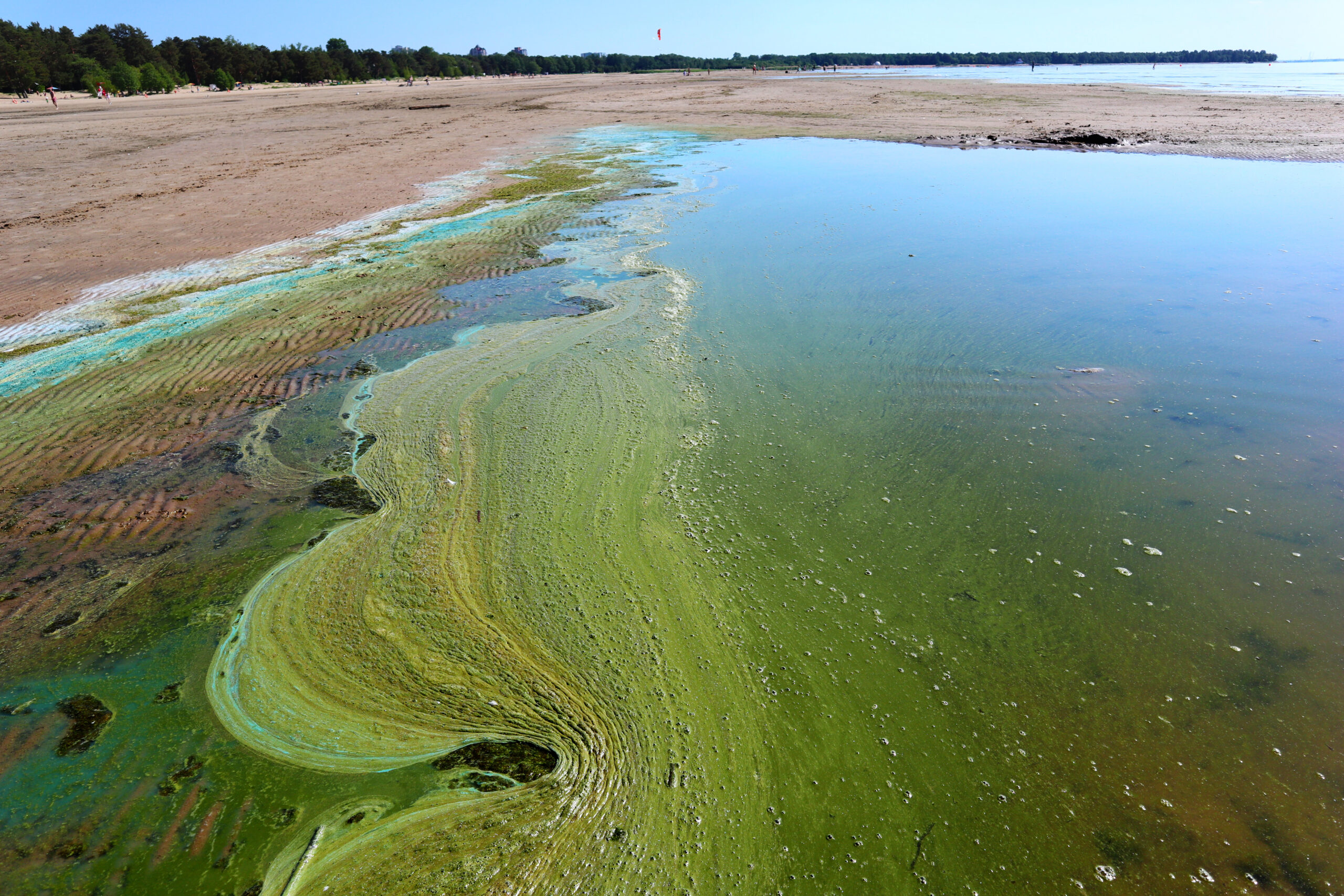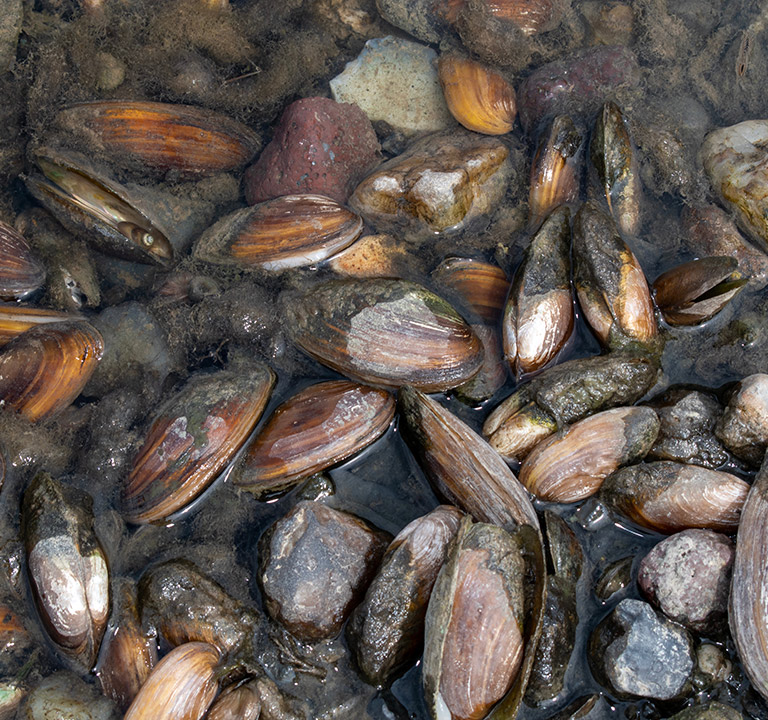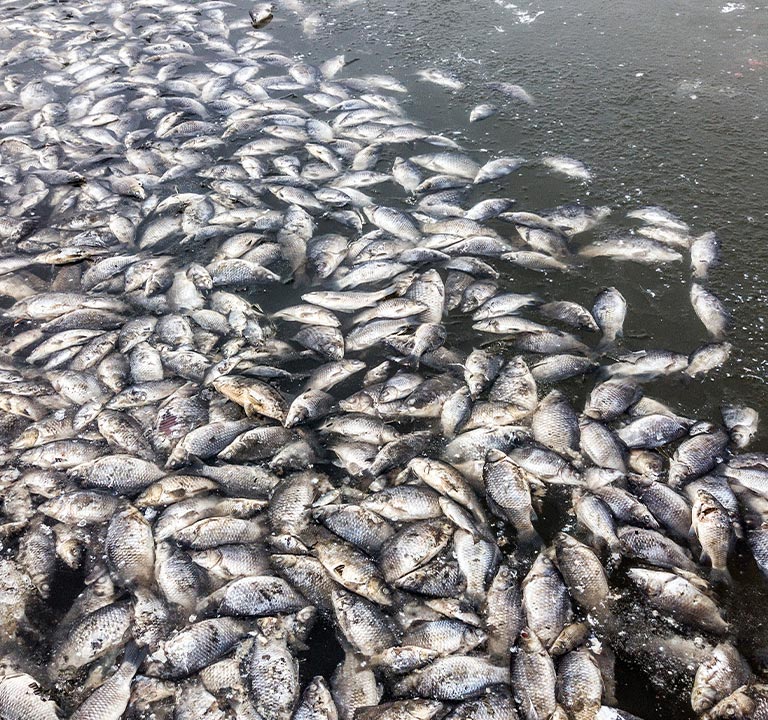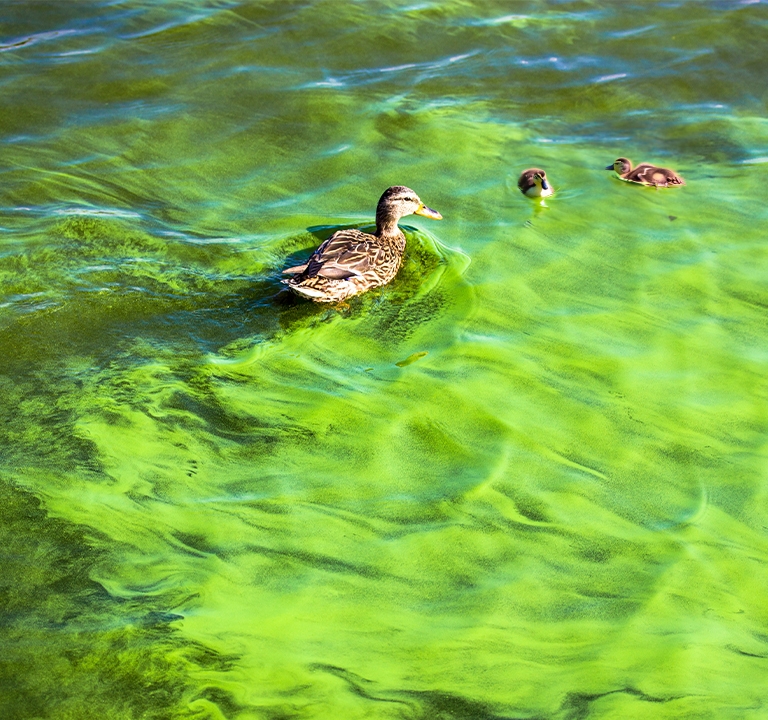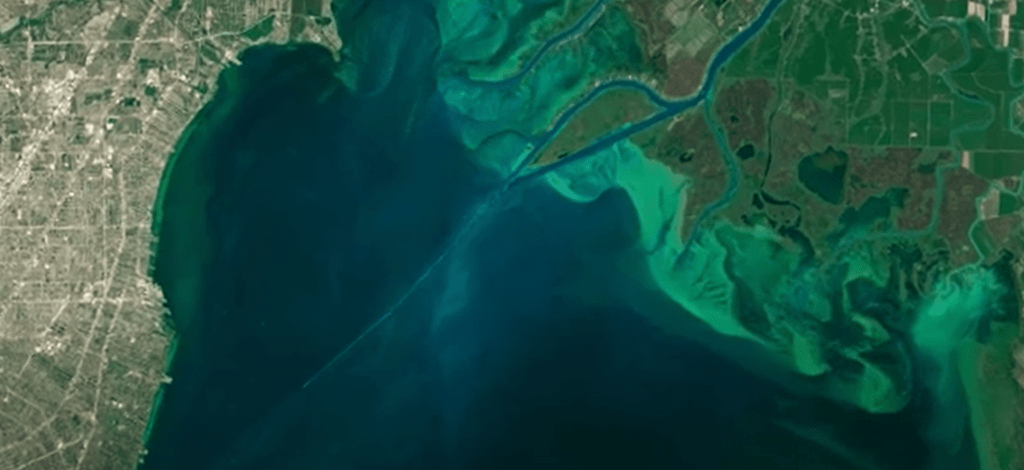Frequent algae blooms caused by nutrient pollution along our coasts are increasing the occurrence of spoiled beach vacations.
Summer Fun?
Packing up the car and piling in the kids and the dog for a family trip is one of the most iconic annual rituals of our time. Everyone is packed in. Every beach accessory is tightly strapped to the roof rack, in the hopes that they won’t fly off in the middle of the freeway. The trip itself always takes longer than anyone wants, with countless “Are we there yet?” inquiries from the back seat. Finally, the long-awaited destination has been reached, the car gets unpacked, and everyone is off to the beach for a sunny and fun-filled afternoon. It is only then, at the end of the long journey and after weeks of anticipation, the dreaded posted signs are read by all, “No Swimming – Algae Bloom. Dangerous Bacteria in the Water.”

As deflated and sad as anyone might be with this devastating news, the impact of algae blooms stretches much farther than ruining a trip to the beach. Numerous reports of sick sea lions along California’s central coast have been attributed to toxins from algal blooms, and algae blooms are occurring with more and more frequency around the globe. According to a study published in the journal Nature in March of 2023, the researchers used satellite data on 153 coastal countries and 54 large marine ecosystems to track algal blooms around the world between 2003 and 2020. During this timeframe, there was an increase in frequency of 59 percent, and an increase in bloom size of approximately 13 percent – or 1.5 million additional square miles.
What is nutrient pollution?
There are a number of factors that help fuel algae blooms. Increased water temperature – which accelerates bacteria growth – is certainly one of the primary culprits. Nutrient pollution is another key problem that has led to the increased occurrence of algae blooms. Naturally-occurring nutrients (primarily nitrogen and phosphorus) at normal, balanced levels along our coasts and in lakes and rivers are healthy, as they support the growth of algae and aquatic plants. These plants in turn provide food and habitat for fish, shellfish, and smaller organisms that live in water. Too much nitrogen and phosphorus creates what is referred to as nutrient pollution.
Why is nutrient pollution a problem?
Nutrient pollution, caused by excessive levels of nitrogen and phosphorus in bodies of water, typically originates from fertilizer or waste runoff from factory farming, and industrial and municipal wastewater treatment plants. These increased levels of nutrients can deteriorate water quality as algae can grow rapidly, reducing or even eliminating the oxygen supply and reducing the exposure to sunlight. Nutrient pollution has been exacerbated by climate change, with increased water temperatures (more conducive to algae growth) and bigger storms (heavier rainfall leading to increased erosion leading to a greater influx of nutrients from the runoff). Nutrient pollution leads to habitat damage, loss of marine life, drinking water contaminated with toxins and bacteria, and ultimately negative impacts on human health. According to the New York State Department of Health, contact with contaminated surface waters can cause diarrhea, nausea, or vomiting; skin, eye, or throat irritation; and allergic reactions or breathing difficulties.
As much as wastewater treatment plants have been identified as a critical solution for implementing technologies aimed at addressing nutrient pollution, it is an all-too-common occurrence in communities around the US, Canada and around the globe. It is estimated that the cost of treating and preventing blooms – in the US alone, between the years 2010 and 2020 – cost more than $1 billion, and that figure is expected to rise as global temperatures rise. From the shores of the Gulf of Mexico to the central coast of California and beyond, algae blooms will continue to have a definitive impact on marine life, human life, coastal communities, and our natural world.
